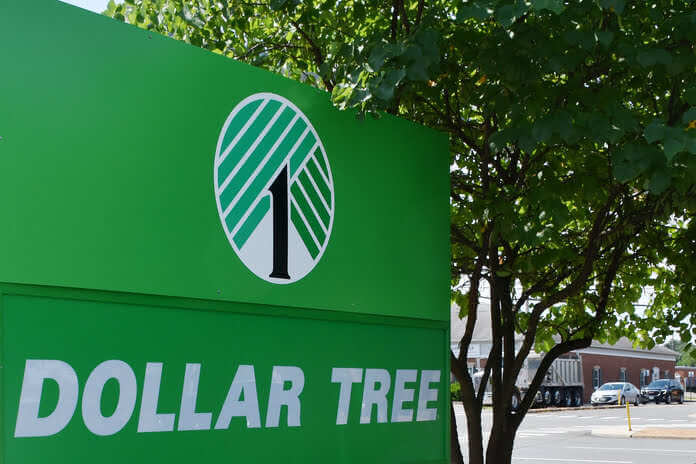Dollar Tree, Inc. (NASDAQ:DLTR) has released its financial results for the second quarter of fiscal 2023, outperforming the Zacks Consensus Estimate for both earnings and sales. While the company experienced a rise in its top-line performance compared to the previous year, there was a decline in earnings. The results were driven by growth across both segments, increased foot traffic, and notable gains in market share. As a result, the company has raised its fiscal 2023 revenue outlook.
In early trading on August 24, shares of DLTR saw a decrease of more than 6%, possibly due to subdued consumer spending trends. Despite this dip, this Zacks Rank #2 (Buy) stock has exhibited a 4.1% increase over the past three months, slightly behind the industry’s overall growth of 6.5%.
Quarterly Breakdown
Dollar Tree observed a 43% drop in earnings per share year-over-year, with earnings totaling 91 cents per share. Nevertheless, this figure managed to exceed the Zacks Consensus Estimate of 88 cents.
The company’s consolidated net sales demonstrated an 8.2% improvement year-over-year, reaching $7.325 billion, which surpassed the Zacks Consensus Estimate of $7.222 billion. Enterprise same-store sales (comps) exhibited a positive trend with a 6.9% increase compared to the previous year. Among its banners, Dollar Tree experienced a 7.8% growth in comps, while Family Dollar saw a 5.8% improvement.
Enterprise comps exceeded earlier predictions of 4.8% growth, outperforming 4.9% for the Dollar Tree banner and 4.8% for the Family Dollar segment.
Dollar Tree’s performance was buoyed by a 9.6% surge in traffic, although this was partly offset by a 1.6% decrease in average ticket size. Family Dollar’s comps were aided by a 3.4% rise in traffic and a 2.3% increase in average ticket value.
The company’s gross profit experienced a 0.5% year-over-year increase, reaching $2.1347 billion, although the gross margin contracted by 220 basis points (bps) to 29.2%. Initial expectations predicted a 1% rise in gross profit and a 140 bps contraction in gross margin. The decline in margin was attributed to factors such as an unfavorable sales mix, lower initial mark-on, wage investments in distribution center payroll, and shrinkage.
However, this was partially offset by reduced freight costs. The contraction in margin was also influenced by an outsized margin gain in the previous quarter due to the transition to the $1.25 price point at Dollar Tree. The Dollar Tree banner experienced a gross margin contraction of 400 bps to 33.4%, while the Family Dollar segment saw a 30 bps contraction to 24.4%.
Selling, general, and administrative (SG&A) expenses, as a percentage of sales, witnessed a 130 bps increase, reaching 25.3%, compared to an earlier estimate of 200 bps expansion. This uptick was primarily driven by investments in wages, repairs, maintenance, and various other areas. However, comparable store net sales leverage did provide some offsetting relief.
The company’s operating income faced a decline of 43.1%, amounting to $287.8 million, with the operating margin shrinking by 360 bps to 3.9%. This is in contrast to earlier projections of a 43% rise in operating income and a 350 bps contraction in operating margin. The Dollar Tree segment’s operating margin experienced a 510 bps decline to 10.3%, while the Family Dollar segment reported an adjusted operating income of $11.8 million, reflecting a 78.5% decline year-over-year.
Financial Position
As of the end of the second fiscal quarter, Dollar Tree held cash and cash equivalents totaling $512.7 million. Net merchandise inventories decreased from $5.4222 billion to $5.3294 billion year-over-year. The company’s net long-term debt was recorded at $3.4239 billion, and shareholders’ equity reached $9.031 billion.
During the second quarter of fiscal 2023, Dollar Tree repurchased 703,713 shares amounting to $99.9 million. As of the same date, the company still had $1.6 billion remaining under its existing authorization for share repurchases.
Store Developments
In the second quarter of fiscal 2023, Dollar Tree opened 48 new stores and re-bannered two stores, while also launching 70 new Family Dollar stores. During this period, the company closed 26 Dollar Tree stores and 37 Family Dollar stores. Additionally, 276 Family Dollar stores underwent renovation. As of July 29, 2023, Dollar Tree operated a total of 16,476 stores across 48 states and five provinces in Canada.
Guidance and Outlook
For fiscal 2023, Dollar Tree expects consolidated net sales to fall within the range of $30.6 billion to $30.9 billion, surpassing its earlier projection of $30 billion to $30.5 billion. The company anticipates mid-single-digit growth in comps, compared to the previous guidance of low to mid-single-digit growth. The same-store sales growth is expected to occur in both the Dollar Tree and Family Dollar segments. Previously, Dollar Tree projected low to mid-single-digit growth for Dollar Tree and a mid-single-digit increase for the Family Dollar segment.
Dollar Tree predicts a 3% to 3.5% rise in selling square footage for fiscal 2023, with a focus on new store growth in the latter part of the year.
In terms of earnings per share (EPS), the company foresees a range of $5.78 to $6.08 for fiscal 2023, including a 12-cent contribution from the 53rd week and a 12-cent charge for the legal reserve. This is compared to the earlier forecast of $5.73 to $6.13. These predictions align closely with an estimated EPS of $5.92.
For the third quarter of fiscal 2023, Dollar Tree expects consolidated net sales to fall within the range of $7.3 billion to $7.5 billion, based on mid-single-digit comps growth. The company also estimates EPS to be between 94 cents and $1.04 for the fiscal third quarter, compared to an estimate of $1.18. Comp sales are projected to increase in mid-single digits for both the Dollar Tree and Family Dollar segments.
Featured Image: Megapixl









